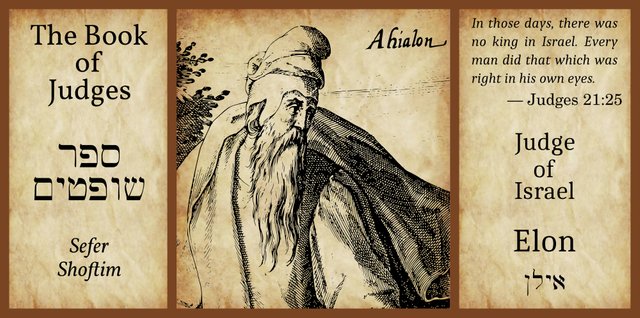
The eleventh Judge of Israel, Elon, is one of the minor Judges. Only two verses are devoted to him in the Book of Judges:
Then died Ibzan, and was buried at Bethlehem. And after him Elon, a Zebulonite, judged Israel; and he judged Israel ten years. And Elon the Zebulonite died, and was buried in Aijalon in the country of Zebulun. And after him Abdon the son of Hillel, a Pirathonite, judged Israel. (Judges 12:10-13)
As we have seen, Elon’s predecessor Ibzan was also a Zebulonite—assuming his native city of Bethlehem was the Bethlehem in Zebulun. Does this mean that Elon is a duplicate of Ibzan?
Elon was buried in Aijalon. In ancient, unpointed Hebrew, these two names have almost identical spellings:
| English | Unpointed Hebrew | Pointed Hebrew |
|---|---|---|
| Elon | אילן | אֵילֹן |
| Aijalon | אילון | אַיָּלוֹן |
“Elon” (אֵילֹן) and “Aijalon” (אַיָּלוֹן) differ merely in their vowels, and it is generally thought that they should be considered the same. The Septuagint renders both Αἰλώμ [Ailōm] (Singer 144)
Elon means oak-grove, from a root that refers to some species of strong tree—oak and terebinth are the commonest translations (Strong 11). This could denote an oracle or holy place, like the Oak of Mamre in Genesis, which has a similar name. Aijalon, however, is translated as deer-field (Strong 11).
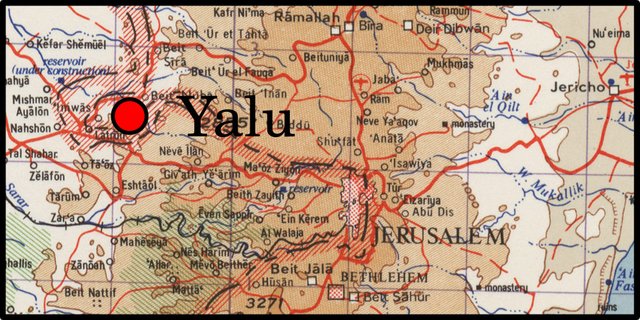
In Genesis and Numbers Elon is identified as a son of Zebulun and the founder of a clan within the Tribe of Zebulun:
And the sons of Zebulun; Sered, and Elon, and Jahleel. (Genesis 46:14)
Of the sons of Zebulun after their families: of Sered, the family of the Sardites: of Elon, the family of the Elonites: of Jahleel, the family of the Jahleelites. (Numbers 26:26)
This has led some Biblical scholars to cast doubt on his historicity, along with that of the other minor judges:
Elon is one of the five minor judges whose names are given together with a few statistics about them, but who are connected with no historical exploits. The others are Tola, Jair, Ibzan, and Abdon. Elon is, in Gen. xlvi. 14 and Num. xxvi. 26, a clan of the tribe of Zebulun. Since Tola and Jair are also clans; since Ibzan and Abdon, from the number of their posterity, are probably likewise; and since the narratives of the minor judges are late additions to the Book of Judges, it is probable that Elon is a personified clan and never had historical existence as a judge ... (Singer 144)
Elon is not mentioned in Louis Ginzberg’s The Legends of the Jews, which is based primarily upon rabbinical sources. Abdon is said to be Jephthah’s successor, though Ibzan is later mentioned in connection with Samson (Ginzberg 4:46-47).
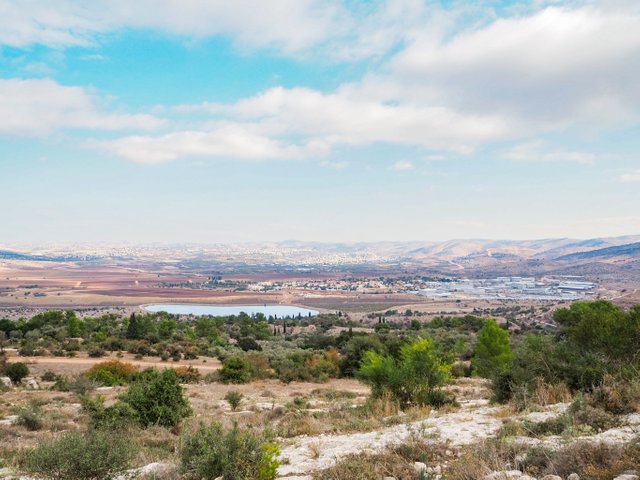
One or Two Aijalons
Elon’s burial place, Aijalon, is located explicitly in the country of Zebulun. Elsewhere in the Bible, however, both Aijalon and Elon are named among the cities allotted to the Tribe of Dan:
And the seventh lot came out for the tribe of the children of Dan according to their families. And the coast of their inheritance was Zorah, and Eshtaol, and Irshemesh, And Shaalabbin, and Ajalon, and Jethlah, And Elon, and Thimnathah, and Ekron, And Eltekeh, and Gibbethon, and Baalath, And Jehud, and Beneberak, and Gathrimmon, And Mejarkon, and Rakkon, with the border before Japho. And the coast of the children of Dan went out too little for them: therefore the children of Dan went up to fight against Leshem, and took it, and smote it with the edge of the sword, and possessed it, and dwelt therein, and called Leshem, Dan, after the name of Dan their father. This is the inheritance of the tribe of the children of Dan according to their families, these cities with their villages. (Joshua 19:40-48)
Note that the list of cities allotted to Dan also includes an Elon. It has been suggested that this Elon is a dittography of Ajalon in the previous verse (Singer 144).
In Joshua 19 we also have a list of cities allotted to Zebulun
And the third lot came up for the children of Zebulun according to their families: and the border of their inheritance was unto Sarid: And their border went up toward the sea, and Maralah, and reached to Dabbasheth, and reached to the river that is before Jokneam; And turned from Sarid eastward toward the sunrising unto the border of Chislothtabor, and then goeth out to Daberath, and goeth up to Japhia, And from thence passeth on along on the east to Gittahhepher, to Ittahkazin, and goeth out to Remmonmethoar to Neah; And the border compasseth it on the north side to Hannathon: and the outgoings thereof are in the valley of Jiphthahel: And Kattath, and Nahallal, and Shimron, and Idalah, and Bethlehem: twelve cities with their villages. This is the inheritance of the children of Zebulun according to their families, these cities with their villages. (Joshua 19:10-16)
Note that this list does not mention any Aijalon or Elon. The simplest explanation is that there was only one Aijalon, that it was originally a Danite city, but that it had become a Zebulunite city by the time the account of the minor judges was compiled. According to the Scriptures, Aijalon changed hands several times throughout history. Although it lay within the territory allotted to Dan, it was actually one of the Cities of Refuge allotted to the Levite clan of Kohath (Joshua 21:24). It was later conquered by the Amorites. Still later, when Rehoboam became the first King of Judah, Aijalon was a fortified city in Benjamin (II Chronicles 11:10). And during the reign of Ahaz, the Philistines captured the city.
| Rulers | Scripture |
|---|---|
| Canaanites | Joshua 10:12 |
| Dan | Joshua 19:40-48 |
| Kohathites | Joshua 21:24 |
| Amorites | Judges 1:34-35 |
| Zebulun | Judges 12:12 |
| Benjamin (Kingdom of Judah) | II Chronicles 11:10 |
| Philistines | II Chronicles 28:18 |
In I Chronicles 6:69, Aijalon is listed as one of the Kohathites’ Cities of Refuge in the allotment of Ephraim.
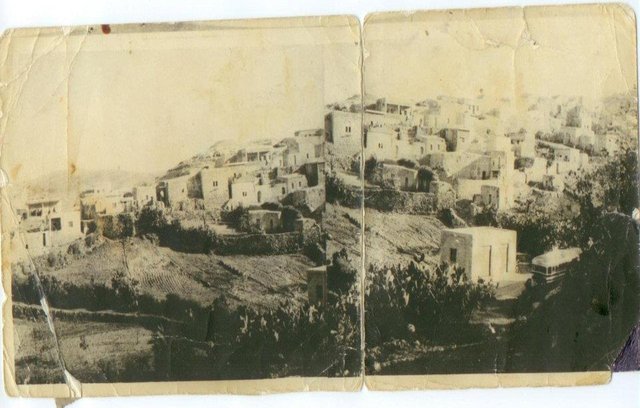
The Danite Aijalon was first identified with the Palestinian village of Yalo or Yalu by Edward Robinson in 1838 (Robinson 63). The village was destroyed during the Six-Day War in 1967 and has not yet been rebuilt. Ajalon has also been identified with Tell Qoqa (Tell el Kokah), an archaeological site which lies about one kilometre to the southeast of where the Palestinian village formerly stood:
While Albright argued that Tell Qoqa was the older city, there is evidence that both sites were occupied during the same periods and that the boundary separating [Early Bronze Age] Qoqa and fortified Yalo is not as distinct as had been argued earlier.
From the surface surveys conducted at Tell Qoqa, pottery has been found from the Early Bronze Age, Middle Bronze Age II, Late Bronze Age, Iron I, and Iron II periods. At Yalo there is indication of Middle Bronze Age II, Late Bronze Age, Iron I, Iron II, Persian, Hellenistic, Roman-Byzantine, and Middle Ages and Ottoman occupation (Freedman 301).
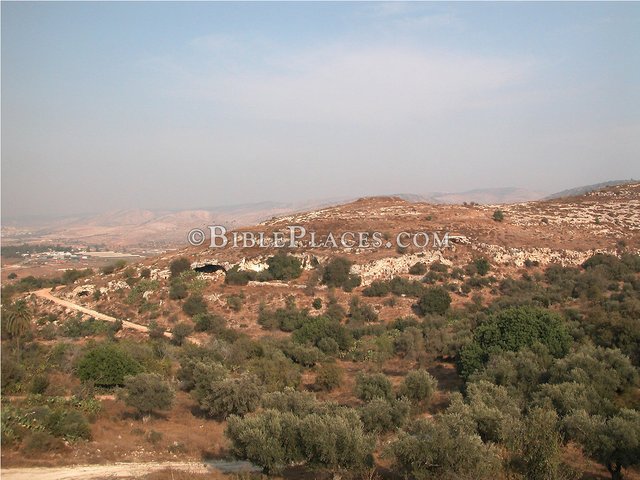
Both identifications are rejected by Biblical scholars who take a more literal approach to the Scriptures:
Ajalon is not Yalo, which is in the tribe of Dan (Josh, x. 12; 1 Sam. xiv. 31); and it is at least doubtful whether it should not be read Elon, as in the LXX. (Ailon, both for the judge and his burial-place), in which ease we must suppose that the place was named from him. It is not mentioned elsewhere. (Ellicott 238)
Some maps record an Ajalon somewhere in the territory of Zebulun, but apparently these are just speculative and do not denote any archaeological sites.
If the Aijalon of Judges 12 is the same as the one referred to in Joshua 10, then we have one more reason to doubt the historicity of the judgeship of Elon of Zebulun.
Dan and Zebulun
But perhaps instead of Two Aijalons? we ought to be asking Two Tribes?
Out of all the tribes of Israel, only Dan and Zebulun shared the characteristic of a maritime people. This was the theme of Jacob’s blessing for Zebulun, that he shall dwell by the seashore and be a haven for ships (Gen. 49:13). Both tribes gained access to the Mediterranean: Zebulun from the northern coastal city of Nahalal (Josh. 19:15), and Dan (initially) from the southern coastal city of Joppa. Deborah recognizes their seafaring similarities, and compares and contrasts them in her song. While they both sail the seas, Zebulun is praised and Dan is criticized. She castigates Dan for not participating in the war against the Canaanites: Dan, why did he linger by the ships? (Judg. 5:17); but extols Zebulun for taking part: Zebulun is a people that looked death in the face (Judg. 5:18). (Moskowitz 253-254)
As a seafaring tribe, Dan undertook migrations. The Bible describes their relocation to the north of Canaan, where they conquered Laish, or Leshem, and made it their principal stronghold. We have already looked at their possible links with the Danaans and Danaids of Greek history and mythology. As for Zebulun, many maps of the Twelve Tribes assign Zebulun a landlocked territory. Others give it short coasts on the Mediterranean Sea or the Sea of Galilee, or both. This is a curious state of affairs, given the Bible’s explicit references to Zebulun’s seashore.
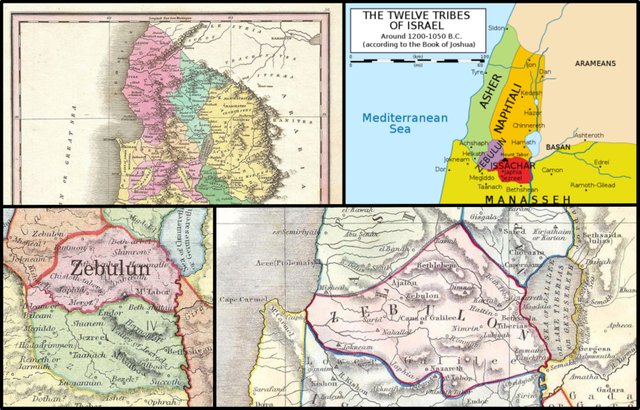
Conclusions
There are good reasons to doubt the historicity of Elon as described in the Book of Judges. Only two verses are devoted to his alleged judgeship, and even these few words are replete with problems:
Is Elon a person or a place?
Is Aijalon a city in Zebulun or is it the other Aijalon at Yalu or Tell Qoqa?
Do Elon and Aijalon refer to the same person|place?
And that’s a good place to stop.
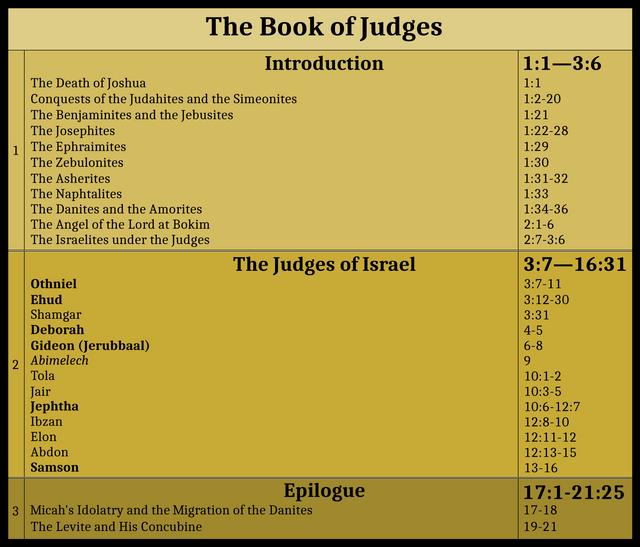
References
- Charles John Ellicott (editor), An Old Testament Commentary for English Readers, Volume 5, Cassell & Company, Limited, London (1884)
- David Freedman (editor-in-chief), The Anchor Yale Bible Dictionary, Doubleday, New York (1992)
- Louis Ginzberg, The Legends of the Jews, Volume 4, Translated from the German by Henrietta Szold, The Jewish Publication Society of America, Philadelphia (1913)
- Louis Ginzberg, The Legends of the Jews, Volume 6, Translated from the German by Henrietta Szold, The Jewish Publication Society of America, Philadelphia (1928)
- David G Hansen, Zebulun by the Sea? Zebulun’s Mysterious Borders, Associates for Biblical Research, Akron, Pennsylvania (2018)
- Nathan C Moskowitz: Elon the Zebulunite of Aijalon: An Historical Theory, The Jewish Bible Quarterly, Volume 43, Number 4, Pages 249-254, The Jewish Bible Association, Jerusalem (2015)
- Edward Robinson, Biblical Researches in Palestine, Mount Sinai and Arabia Petræa, Volume 3, Crocker & brewster, Boston (1841)
- Isidore Singer (managing editor), The Jewish Encyclopedia, Volume 5, Funk & Wagnalls Co, New York (1904)
- James Strong, Hebrew and Chaldee Dictionary, in The Exhaustive Concordance of the Bible, Eaton & Mains, New York (1890)
Image Credits
- Elon: After Jan Snellinck (artist), Gerard de Jode, Thesaurus Sacrarum historiarum Veteris et Novi Testamenti, Folio 95r, Antwerp (1585), Public Domain
- The Location of Yalu: University of Texas Libraries, Perry-Castañeda Library Map Collection, Jerusalem, D Survey, Great Britain War Office and Air Ministry (1960), Public Domain
- The Valley of Ajalon: © Omega Tours & Travel, Fair Use
- Yalu before Its Destruction: Anonymous Photograph, Public Domain
- Tell Qoqa from the West: © Todd Bolen (photographer), Bibleplaces.com, Fair Use
- Zebulun Map 1: Anthony Finley, A New General Altas, Philadelphia (1827), Public Domain
- Zebulun Map 2: © Janz (designer), Creative Commons License
- Zebulun Map 3: Samuel Butler, The Atlas of Ancient and Classical Geography, Map 17, J M Dent, London (1907), Public Domain
- Zebulun Map 4: Palestine or the Holy Land According to Its Ancient Divisions & Tribes, George Philip & Son, Liverpool (1852), Public Domain
